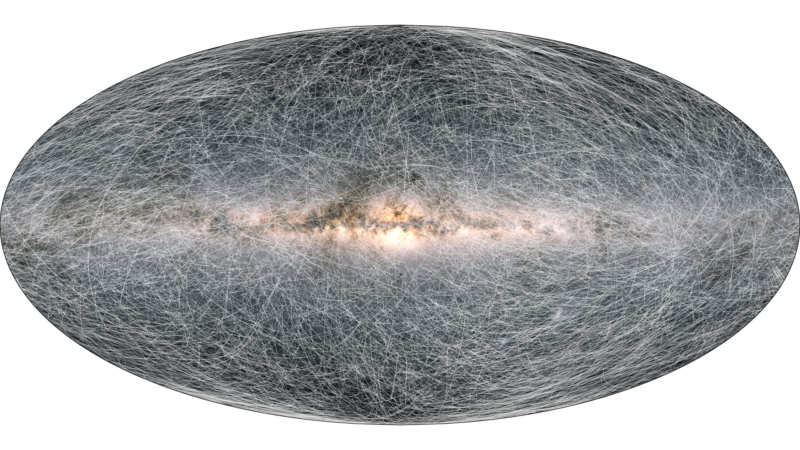
Enlarge / Scientists have used the data from Gaia to track the location and motion of stars in our galaxy. (credit: ESA/Gaia/DPAC)
Galaxies like the Milky Way are thought to have been built through a series of mergers, drawing in smaller galaxies and clusters of stars and making these foreign stars their own. In some cases, the mergers were recent enough that we can still detect the formerly independent object as a cluster of stars orbiting the Milky Way together. But, as time goes on, interactions with the rest of the stars in the Milky Way will slowly disrupt any structures the cluster incorporates.
So it's a bit of a surprise that researchers found what appear to be the remains of a globular cluster composed of some of the oldest stars around. The finding is consistent with a "growth through merger" model of galaxy construction, but it raises questions about how the cluster stayed intact for as long as it did.
Data-mining Gaia
The results started with an analysis of data from the ESA's Gaia mission, which set out to do nothing less than map the Milky Way in three dimensions. Gaia imaged roughly a billion objects dozens of times, enough to estimate both their location and their motion around the Milky Way's core. This map has helped scientists identify structures within our galaxy based on the fact that there are some groups of stars that are not only physically close to each other, but all moving in the same direction.
Read 11 remaining paragraphs | Comments
